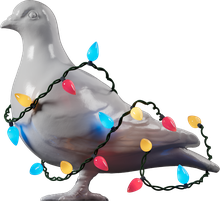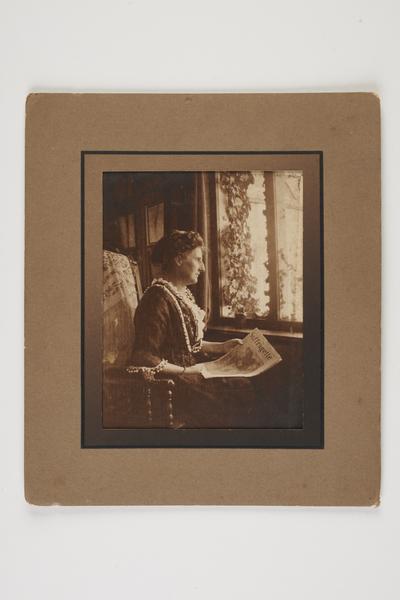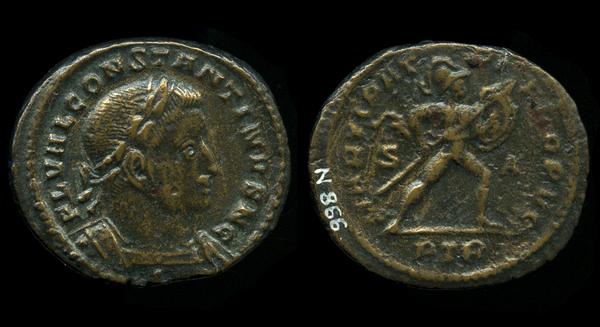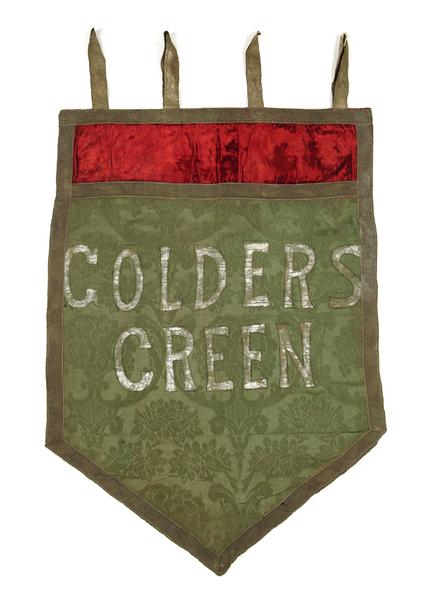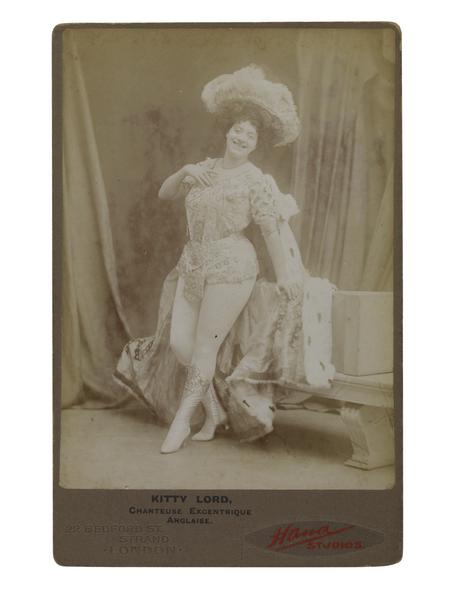05 May 2020 — By Curatorial
6 women’s stories from London’s history
For International Women's Day, we asked staff from across London Museum to choose their favourite object with a female focus from our collection. Here are some of their picks.
Hatpin, or woman's weapon? 1909

A silver hatpin ornamented with rose pattern, circular silver head ornamented with roses, 1909.
Danielle Thom, Curator of Making: These hatpins are such simple objects, but they have a hidden history. Long, pointed steel pins topped with a decorative bezel, they were worn by women in the late 19th and early 20th centuries, when elaborate broad-brimmed hats were in vogue. Their intended use was to anchor the hat to the equally elaborate, broad hairstyle worn underneath, but they soon developed another purpose. As women increasingly entered London’s public spaces – as workers, consumers, campaigners and students – they were subject to harassment and the threat of violence from predatory men.
The sharp hatpin, sometimes as much as a foot long, became a handy weapon, used by women from all walks of life for self-defence. There was even a popular music-hall ballad, Never Go Out Without Your Hatpin, which suggested the risks a woman ran by going out in public without this method of protection. Unsurprisingly, the lengthy hatpin attracted the ire of many men, if outraged letters written to The Times are anything to go by.
Wonderful Adventures of Mrs Seacole in Many Lands, 1857

Mary's autobiography was the first to be published by an Afro-Caribbean woman in Britain.
Marina Spiteri, Programme Coordinator, Memories of London: This is the autobiography of Mary Seacole, who worked as a nurse during the Crimean War. Her story is so interesting, but, personally I just like the book. She writes it in a really surprising way because she isn’t modest and doesn’t hide her achievements. She shouts about them because she knows that adventure, shock and exaggeration sells, and at this point in her life she was flat broke. She portrays herself as a respectable middle-class Victorian woman, even though now we often set her apart from other women of her time and particularly emphasise the colour of her skin. It's a little book with a huge story waiting to be read.
Photograph of a Suffragette father and son, 1910–1913

Postcard with photograph of Thomas Lamartine Yates and his son Paul, 1910–13
Rose Briskman, Conservator, Paper: My choice is a bit of an odd one, being a photograph of a father, Thomas Lamartine Yates, with his small son, Paul, on his lap. They look to be a slightly uncomfortable duo. Tom Yates was married to Rose Lamartine, a Suffragette. They both worked to gain women’s suffrage. They both also loved cycling – I like them already! In January 1909, Tom gave Rose a letter saying, “The present I give thee is not gold or silver but permission freely and gladly, to offer up thy liberty for the benefit of downtrodden women.”
Rose was imprisoned for one month for her part in a demonstration at the House of Commons later that same year. Her son was eight months old at the time. The weekly magazine Punch published a verse entitled ‘A Mother’s Sacrifice’ criticising her for choosing to abandon her son. I find the idea of being given permission to do something by your husband outmoded, but still I love this sentiment written in a letter to his marital teammate. I am grateful to Rose and Tom, and others like them, who braved public criticism, so that there is now much more choice in how parents share parenting.
Sainsbury recruitment letter for female staff, 1914–1918

Sainsbury's recruitment letter for female staff, 1914–1918. During the First World War, many women were recruited in shops like Sainsbury's.
Kat Petersen, Sainsbury Archivist: Like many shops, Sainsbury’s had to recruit women during the First World War. They took up exactly the same roles as the men they were replacing – with the exception that they were provided with chairs to sit on behind the counter. On some level this sounds like the beginnings of equality in the workplace, but what strikes me most about this letter is its expectation that women who might work are young and unmarried (not to mention living with their parents), and that being too short would disqualify you.
Having said that, many women took to being given these opportunities and by the end of the war around a third of Sainsbury’s shops were managed by women. Demobilised men were sent for refresher training before returning to their pre-war jobs, but some of the women who had taken their places remained with Sainsbury’s. I really like the story of Alice Hayes, who had become manager of the store at 43 High Street, Islington. She was demoted to saleswoman when a new male manager was appointed in December 1919, but her talents had been recognised, and when the post of manager at 159 Queen’s Crescent, Kentish Town became vacant three months later, she was offered the job and remained there until July 1931.
Holloway prison badge, 1912

Holloway brooch designed by Sylvia Pankhurst. The silver and enamel brooch incorporates the portcullis emblem of the House of commons and a central broad prisoners arrow in purple, white and green enamel.
Giulia Delprato, Marketing Officer: This silver and enamel brooch, designed by Suffragette and pacifist Sylvia Pankhurst, was presented to Kate Lilley on her release from Holloway prison in 1912. Kate and her sister Louise were arrested for breaking windows in the War Office and sentenced to two months hard labour. In prison, they endured a short period of hunger strike.
Thanks to prison accounts, we know that Kate and Louise were placed in neighbouring cells and found comfort and support in the companionship of other women sharing their fate.
I love how Sylvia’s design, featuring the emblem of the House of Commons and an arrow, painted in classic purple, white and green enamel, represents the strength of the women who, despite being imprisoned, starved and isolated, kept fighting for their right to political representation.
Darning sampler by Hannah Grimes, 1798

Darning sampler by Hannah Grimes, 1798. This sampler reminds us of the skill and stories that lie behind that often anonymised women’s labour.
Lucie Whitmore, Curator, Fashion: This small and unassuming object is a sampler, embroidered and darned by Hannah Grimes. She was a student at Ackworth School in Yorkshire, a Quaker boarding school for children whose parents were not wealthy. The girls were taught sewing, knitting and darning, to prepare them for their future married lives or provide them with skills through which they could make a living.
It is unusual to know more than the most basic facts about the women whose names are preserved in their needlework. With Hannah we know only the rough dates of her birth and death, her faith and, of course, her skill with a needle. But for me this sampler represents the many unknown women and girls for whom sewing was an inevitable part of life. Something for which they would rarely have been recognised, celebrated or thanked. Throughout history, sewing has variously been a joy, a burden, a comfort, a necessity, a livelihood and a lifeline for countless women. This sampler reminds us of the skill and stories that lie behind that often anonymised women’s labour.
What are your favourite female-focus objects?

